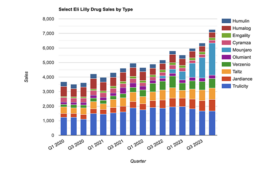|
Until recently, transdermal patches were only useful for small molecule therapies because of the inability of larger molecules (such as proteins) to passively cross through the outer skin layers and reach the capillaries in the dermis. To improve the situation, Liechtenstein-based Pantec Biosolutions has developed a technology, now in clinical trials, to allow transdermal delivery of larger molecules. P.L.E.A.S.E. (Painless Laser Epidermal System) is a laser-powered system consisting of a handheld device that causes painless controlled microporation of the epidermis to facilitate intraepidermal drug delivery of low- and high-molecular weight drugs. The method is designed for self application, is easy to use and painless for the patients.
P.L.E.A.S.E. uses a 2940-nm range laser to create an array of micropores in a predefined area of the skin. Pulsed laser energy causes the water contained in the outer layer of the skin to superheat within a few microseconds and evaporate. The laser pulses also cause the desiccated tissue to be cleared from the area with only minimal heating of surrounding tissue. The unit functions with a predetermined set of operating parameters ?pulse width, energy density, and repetition rate?and the laser light is deflected by a scanner mirror allowing different array shapes. The dose delivered from the subsequently applied drug patch can be controlled by the design of the array within a range from 1 to 5000 micropores. The micropores generated by this process are controlled so that they do not penetrate to the dermis and are the optimal “top hat” shape for best use with transdermal delivery. The whole process guarantees fast, convenient microporation without carbonisation and thermal damage of the surrounding tissue. Clinical results from a skin tolerability study also demonstrate that the process is painless.1 Once microporated, the skin is ready for application of the patch for either local or systemic drug delivery.
Pantec Biosolutions’ first targeted therapy is for in vitro fertilization (IVF). The current therapies rely on multiple injections of triptorelin (a GnRH superagonist) and FSH (follicle-stimulating hormone) in preparation for fertilization and progesterone after the implantation of the fertilized oocyte. To this end, Pantec has developed a triptorelin patch. A decapeptide (molecular weight: 1311 Da), triptorelin cannot normally diffuse passively across skin. A Phase 1 trial of this patch in conjunction with P.L.E.A.S.E. has shown it to be effective and safe.2 The triptorelin patch was applied to the forearm of healthy male volunteers after micropores were created with the P.L.E.A.S.E. device. The mean concentration of triptorelin was 7 times higher compared to the currently administered injections, meaning that the dose can be lowered in upcoming pharmacodynamic studies. Triptorelin is the first of two patches currently in development. Pantec Biosolutions also has a stable FSH (follicle-stimulating hormone, molecular weight: 32 kDa) patch in clinical development. Ultimately, Pantec is confident that these patches will become an accepted alternative for IVF patients, replacing 40–70 cumbersome and painful injections.
About the Author
Dr. Christof Böhler, CEO of Pantec Biosolutions has a PhD in chemistry from ETH Zurich and an executive degree in international management from UBC Vancouver. Dr. Christof Böhler, CEO of Pantec Biosolutions has a PhD in chemistry from ETH Zurich and an executive degree in international management from UBC Vancouver.
References
1. Wilhelm D. Clinical study report, Proderm, March 22, 2007.
2. Timmer W. Clinical study report, CRS Mannheim, August 06, 2009.
This article was published in Drug Discovery & Development magazine: Vol. 12, No. 10, November/December 2009, p. 36.
Filed Under: Drug Discovery





